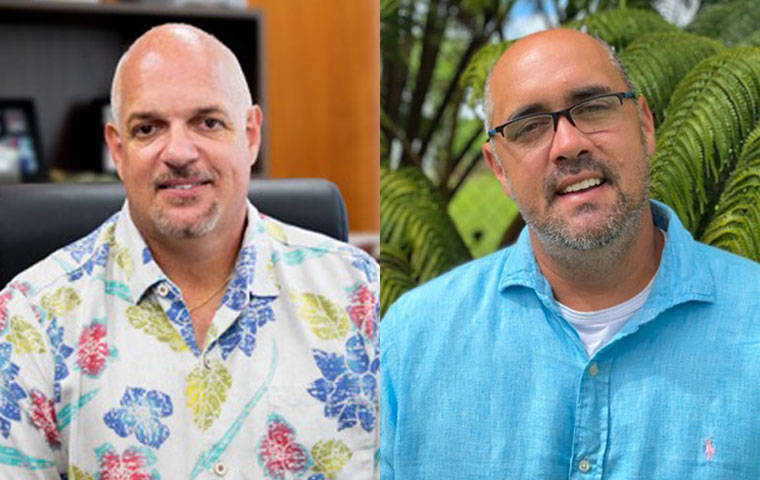VIDEO: Bob Davis, area superintendent for Leilehua-Mililani-Waialua complex, and Chad Farias, area superintendent for Hawaii island’s Kaʻu-Keaau-Pahoa complex, join Honolulu Star-Advertiser’s Spotlight Hawaii


COURTESY PHOTOS
Bob Davis, area superintendent for Leilehua-Mililani-Waialua complex, and Chad Farias, area superintendent for Hawaii island’s Kaʻu-Keaau-Pahoa complex.


Hawaii Department of Education Complex Area Superintendents Bob Davis and Chad Farias joined Spotlight Hawaii to discuss how distance learning is working for students, teachers and parents in their districts.
Farias is responsible for nine schools in Hawaii Island’s Kau-Keeau-Pahoa complex, while Davis oversees 20 schools in the Leilehua-Mililani-Waialua complex on Oahu.
Both men said they have been incredibly impressed with how hard teachers and supporting staff members have overcome hurdles and adapted to teaching in the wake of the coronavirus pandemic.
“Just today I watched a teacher that had five different devices while she was standing in front of all of them, navigating through that, to ensure that she had student voice coming loud and clear, to ensure that she could watch them as she would in the classroom, to ensure that she could share her screen, so all students could see it, and to ensure that she could see the work of her students, as they’re performing it at their own homes. So it’s pretty tremendous to see how incredible the learning has been on the adult side,” Davis said.
For students in Farias’ area, at first many needed the right computer hardware, then his team had to figure out a way to make sure they could connect to the web since many live in areas without reliable internet service.
“Counselors and teachers have been going into homes, walking up and down subdivisions to hand out devices,” Farias said.
Don't miss out on what's happening!
Stay in touch with breaking news, as it happens, conveniently in your email inbox. It's FREE!
When it comes to connecting the internet, he said they have deployed mobile hubs where students can go to specific sites, like a park or community space, to upload their assignments and download new work.
“We’ve been doing it for four months now, taking vans into communities, publishing it, passing out some snacks and food with the help of other partners, and these vans have charging devices, they have these MiFi’s that are on steroids, they’re pretty fast internet access. And so we’re getting out to various communities,” Farias said.
Some families, especially those in rural areas who have to drive great distances to school, may opt to continue some form of distance learning, even after the pandemic is over. That may be one positive change to come out of this experience.
“Some of our schools in Ka‘u or in the farthest communities, you know, they experience 40-50% chronic absenteeism. That is 50% of our kids missing more than 15 days a year, and that’s often because transportation issues, or weather issues, or if a child is sick or if a parent has to take a child to the doctor, they take all three kids out school,” Farias explained. “In terms of learning what we learned about distance learning and offering that to parents, I hope that never ends.”
Distance learning comes with challenges. Both men said they hope to resume in-person learning for interested families as it is safe to do so, but the timing is difficult to predict.
“Although they’re [teachers] doing far and above anything that I would have expected in a distance learning format, it is still not ideal when you compare it to face to face. That’s why we are pushing to see if we can get more students on campus, face to face, safely,” Davis said.
Spotlight Hawaii, which shines a light on issues affecting Hawaii, airs live 10:30 a.m. every Monday, Wednesday and Friday on the Honolulu Star-Advertiser’s Facebook page. Join Ryan Kalei Tsuji and Yunji de Nies this month for a conversation with guests. Click here to watch previous conversations.



